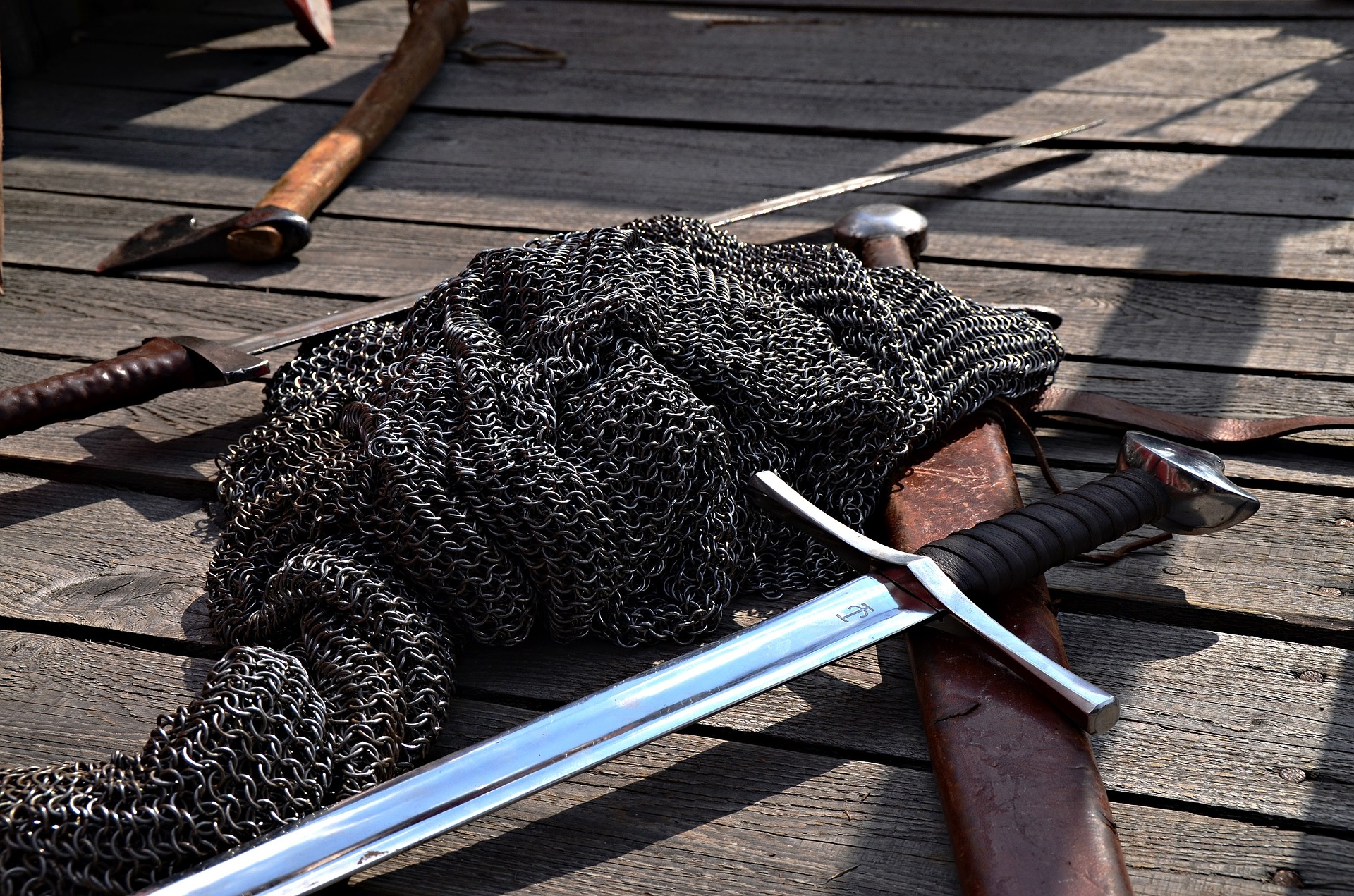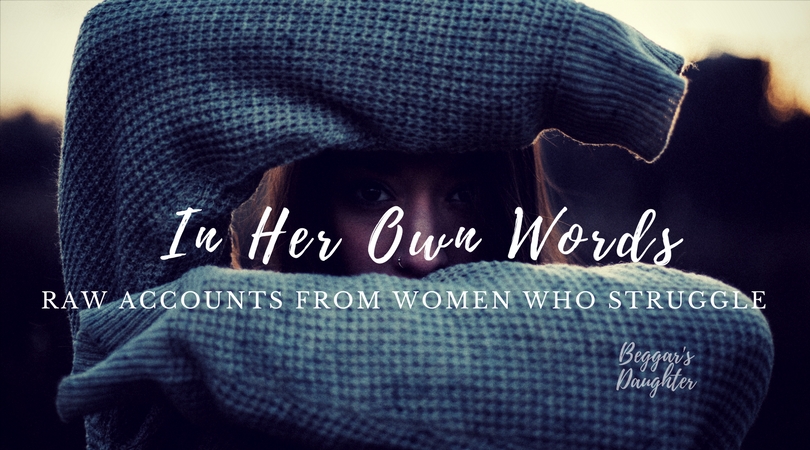
Pornography on Lockdown: Facing Your Internal Triggers
In the last post, I talked about finding your triggers. This is something I personally feel is really important to a continued walk in freedom from things like pornography, lust, and even masturbation. I started my freedom journey 16 years ago (yes, I feel old) and I still have to pay attention to my triggers.
In this post, I want to tackle what do you once you find your triggers. Originally, I planned to address both internal and external triggers here, but it was turning into a mini book. So, this post is going to be about internal triggers and the next one will be about external. The next one will also include a worksheet you can download to help you with all of this stuff.
If you read the last post, you know I say there are internal triggers and external triggers. Internal triggers are things like emotions, while external triggers stem from our environment.
The approaches to both are similar but different enough that it’s worth addressing each individually. While I could summarize both here, the response to the last post shows that taking more time to address them thoroughly is probably going to be most helpful.
So, first up, internal triggers.
What do you do when you have an emotional drive toward pornography?
Emotions can be powerful little things, especially for women. Many an expert will tell you that we connect everything in our life with emotions. And don’t even get me started on hormones! Every day we wake up with a new hormonal cocktail and that affects our emotions which affects our actions.
It’s complicated, and it’s super unhelpful if some of those emotions (or even some of those hormones) seem to propel you toward pornography.
In some cases, you can avoid the emotion.
I’m not saying become cold and heartless. What I am saying is that if, for instance, stress is a trigger for you, learning how to tone down the amount of stress is your life is going to help you. We can never eradicate it completely, but less is always easier to manage than more.
Perhaps feeling disorganized and chaotic is a trigger for you. Cleaning your room or making a to-do list could help with that. So, yes, in a round-a-bout way, making your bed could help you fight pornography.
But, as I mentioned in the last post, there are sometimes when the triggers are just outside of our control.
This is likely the case for many of you during this time of Coronavirus lockdown. There are so many emotions: stress, loneliness, uncertainty, loss of control, fear. All of these can be major triggers, and you can’t necessarily control them. You can’t control that you may no longer have a job. You can’t control that your family member is sick. You can’t control that you can’t control things.
When we can’t control things, we have to cope with them.
If you would say that you use pornography to escape or numb unpleasant emotions, then you are likely using pornography as a coping mechanism. It’s a maladaptive coping mechanism, meaning it doesn’t actually help you adapt to the stress. It doesn’t improve anything about your situation.
To break free from this cycle, we need to develop healthy coping strategies. These can be things like exercise, journaling, talking to a trusted friend.
One of my personal coping strategies is cooking. If you follow my Instagram, you know I often use my “stories” to share recipes I am making. It is rewarding, allows me to be creative and try new things, and meets a need for my body. It has also been instrumental in healing my relationship with food and body image issues, some of which were caused by pornography. (That’s another post for another time.)
But it’s important to know this switch doesn’t happen overnight. You don’t go from running to pornography in crisis to all of the sudden baking a soufflé and it’s all good.
When it comes to coping and internal triggers, there is often some deep, healing work that needs to happen. That takes time. While we love to focus on stopping behavior, shortchanging healing will just lead you to choose another unhealthy coping mechanism.
“But Jessica,” you might say, “as Christians we’re supposed to change our behavior.” I think that needs to be the end goal, yes. But I also believe Jesus was equally as concerned with wholeness. He came to makes us whole. That’s the idea of grace. If He wanted to come and whip us all into shape, He totally could have done that. He could have stoned the woman caught in adultery, ignored the lepers, and enforced the rules of the Pharisees.
But He didn’t. He was more concerned with grace, healing, and the abundant life He promised us. That’s the difference between just “stopping porn” and healing with Jesus.
Think for a moment about how we approach physical pain.
Lately, I’ve made the mistake of leaving one of my drawers open in my kitchen. Twice, I have come around the corner and rammed my knee into the edge of the drawer. I can’t change the fact that has happened, and I can’t change the fact that it hurt. Those are facts that cannot be changed, and the rectangular purple bruises on my knee are proof and a daily reminder.
I have options for how I choose to respond to that pain.
- I can try to muscle through like I don’t have purple bruises all over my knee and scold myself for my clumsiness.
- I can use it as an excuse to do absolutely nothing for the next two weeks and never go in the kitchen again.
- I can just keep taking painkillers until it feels better.
- I can keep moving forward, being more careful about leaving the drawer open, and taking care of my injured knee, seeing a doctor if things don’t get better.
It’s an imperfect analogy, but I think it effectively illustrates how we can cope with emotional pain.
There’s a difference between stopping the pain and healing it.
When we’re more concerned with just stopping pain, we make poor choices. Yes, behavior matters and conducting our lives in ways that honor God matters. But healing also matters. And while you might be able to cold turkey quit a behavior, you can’t instantly heal. So, while you are navigating trying to find a new, healthy, God-honoring coping strategy, you are still going to struggle with the old one.
This discourages so many women because they want desperately to stop coping in unhealthy ways, but habits take time to break. Currently, of all the coping strategies you can choose, the one you are familiar with is the one you will pick. You know it. It’s easy. It’s familiar. As unhealthy as it may be, it feels “safe.”
That’s why I try to encourage people with internal triggers to set up what I call “roadblocks.” You might not be able to stop the emotion, but you can do your best to stop where it normally takes you. Think of it like a light switch. If the switch is the trigger, there is still a wire connecting it to the bulb. Putting up a roadblock is like cutting the wire.
Whatever it takes, you want to make the unhealthy coping strategy the most inconvenient coping strategy in your toolkit.
That may mean an accountability software on your computer (like Covenant Eyes), or enabling screen time on your iPhone. It may look like putting your tech in a different part of the house or blocking all of your “go to” websites. And here’s yet another unpopular opinion in this series:
This does not look like praying harder or reading your Bible more.
Those are great for the healing and growth but they are not great “inconvenience” strategies to help you in the heat of the moment.
“But Jessica! What about 1 Corinthians 10:13? God promises to help us endure temptation, right?”
Yes, He does, and by all means, include prayer in your toolkit.
But the problem is, many of us pray after we’ve already made up our mind to give in to temptation. We’re asking God to stop a moving train when we’re at the helm, pouring on the coal.
You get stressed, so you start chasing after pornography, you close the bedroom door, crack out your phone, open the browser, type in one of your favorite websites, click “enter” and as the page is loading, you pray.
Most of the time, that’s not going to help.
I used to pray prayers like this. “God, if You really don’t want me to do this, don’t let the webpage load.” That’s not exactly how prayer is supposed to work.
So prayer, while a great tool, falls on the side of growth and healing and less on the side of making our poor choice inconvenient.
If anything, trying to use prayer as a last ditch effort to get God to stop you makes prayer inconvenient, and that’s not what we want.
The point is to put a speed bump between the emotion of the moment and the decision to watch pornography (or escape to fantasy or masturbation). Sticky notes on your computer screen might help remind you of what the right choice is, but they don’t necessarily slow you down in making it.
Do something that actually slows the process of falling. Something that gets in your way. If a trigger accelerates the process, the roadblock is the brakes. It’s the water on the fire. You’ve got to figure out what that is for you.
Here’s the trick: the best time to do this is when you’re not in the heat of the battle. Set up roadblocks when you need them the least. I call it “proactive freedom.”
The problem is, we miss this. We wait until we’re in the moment and then we try to stop ourselves. When we can’t, we feel frustrated, like a failure, and feel like whatever strategy we had didn’t work. The strategy might have been perfect — the timing was wrong.
You’ve probably been there. Had a great day of no struggle, not even a thought of it so you thought, “Pffft.. I don’t need password protection on my phone.” You might be reading this post and know exactly what your trigger is and a great roadblock to put in place to help. You say to yourself, “Great! Next time I’m struggling, I’ll do that.”
No. Do it now.
I think of the two types of triggers (internal vs. external), internal triggers are the hardest. We carry them with us. In many cases, facing them and finding freedom comes from a hard process of healing. We can feel like we’re less at war with our struggles and more at war with ourselves.
There’s so much more I want to share about this. So much I could unpack.
Let me close with this (because I’m at a full-length book chapter at this point):
I still struggle with maladaptive coping strategies for certain things. When I struggled with pornography, my big triggers were stress, sickness, and boredom. Since breaking free from pornography, my struggle is more extremely negative thinking and thoughts of self-harm. My triggers for those are feelings of overwhelm and failure.
But remember that analogy with my knee?
I’m learning that healing doesn’t come from holding my breath and just white knuckling my way through it. Freedom doesn’t come from acceptance. Instead, healing and freedom come when I ask myself, “Where is this coming from?” Because that’s where healing needs to happen.
My knee hurts because I banged it into a drawer (twice). If it continues to hurt for a while, I might need to see a doctor because something might be broken. If you notice a negative coping strategy creeping up over and over again, that’s the time to hone in on it and get to the bottom of it. That’s where prayer and Bible reading come in. It’s also where counseling can help.
If you read my book, you might recognize the pattern of self harm and negative thinking. In fact, you might have caught it long before I did.
It took me years, and by years, I mean the 16 that I’ve been walking in freedom from pornography. All sixteen of them.
After giving birth to my daughter, I had to fill out questionnaires to evaluate for postpartum depression. I was struggling and had been less-than-truthful on previous questionnaires. I decided to be honest that day, answering appropriately for a woman who had considered running a knife along her arms.
I scored a 9.
The doctor was concerned and said, “We usually start paying attention when women hit a 6, and you scored a 9. We typically refer women like you to talk to someone.”
“Oh, it’s ok.” I told him, “I am a very melancholic person.” (Actually, Doctor, wanting to slash my arms is my typical response to feeling like a failure and nothing has made me feel like a failure more than these first six weeks of motherhood.)
Just muscle through it, ignore it and it will go away.
It took a while for me to realize, “Wait a minute, this isn’t the life I want to live!” I don’t just want to excuse these kinds of things, blaming them on who I am.
So, I had to stop and ask myself, “Where is this coming from?” Because I know one thing for sure: it’s not coming from Jesus. It took some hard days of prayer and pressing into the pain a bit to identify it.
It is a holdover from my days of struggling with pornography.
When I failed at breaking free from pornography, I would hurt myself. I would bang my head against the tub. I would scald myself with hot water in the shower. I thought I could fix myself by physically punishing myself.
After I confessed and started to find freedom, when I would fall I would have this strong desire to claw at my arms in frustration. I used to call it “wanting to skin myself.” It seemed super spiritual at the time. You know, the whole “fleshly desire” talk. Basically, I’ve never learned to cope with “failure” in a healthy way. So, now I’m working on that.
Healing is so important, and it’s a journey we’re constantly on. Healing is an important part of freedom and is a vital part of facing internal triggers. If you have an internal trigger, yes, try to limit it, yes, put up a roadblock, but don’t forget healing. Your struggle never has to be “just how it is” or “part of who you are.”
You, my friend, are more than your struggle, more than your triggers, and worth the hard work of healing.
The Lord is my shepherd; I shall not want.
He makes me lie down in green pastures.
He leads me beside still waters.
He restores my soul.
Psalm 23:1-3a




